Nothing can stop an enthusiastic swimmer from enjoying this healthy and invigorating sport. Nothing, perhaps, except the pain of a torn rotator cuff, a pulled groin muscle or a similar setback. Swimmers are prone to injury, particularly of the shoulder, groin, and neck.
To prevent your young athletes from sustaining a season-ending injury, encourage them to strengthen the muscles around these joints and perform a simple stretching routine every time they takes the plunge.
If your child or adolescent is part of a swim class, club, or team, coaches and teachers can be valuable resources. Be sure your child's coach always has the team stretch before practice, so your aquatic kiddo can learn great habits and avoid injury.
Before You Take the Plunge: Warming Up
Warming up is essential before beginning a stretching routine. Five to ten minutes of low- to medium-intensity exercise will warm up the muscles, get the heart pumping, and provide the most benefit from stretching.
Because a swimmer uses nearly every major muscle group in the body, the ideal stretching routine is equally comprehensive. Swimmers should stretch their calves, hamstrings, quadriceps and gluteal muscles as well as the muscles of their torso, chest, arms and neck.
Stretching Basics
Swimmers can choose from a great variety of stretching techniques and routines. Static stretches that provide a constant, steady stretch on a muscle group are the most common, and the safest for beginners.
When stretching, provide a steady pressure to the muscle group until a stretch is felt, then hold. Pain is not necessary! Use the opposing muscle group to deepen the stretch. Hold each pose for fifteen to thirty seconds. "Bouncing" during a stretch is unnecessary; it may even cause injury to the muscle.
Great Stretches for Swimmers
Swimmers use leg muscles just as much as the arms and torso, and therefore leg stretches are as important as those for the rest of the body.
A calf extension, done either on a step or by leaning against a wall, loosens calf muscles and prevents cramping. Touching the toes or lying back on the floor and extending a leg upward stretches the hamstring. These and a simple standing quadriceps stretch are sufficient for pre-swim stretching of the legs.
Stretching the "core" muscle groups of the body is important, as these muscles stabilize the body in the water and provide a base for every other muscle group to work from.
To warm up and stretch the core before swimming, try the cat stretch. On all fours, duck the head and bow the spine, pulling the belly button in towards the ceiling, like a startled cat. This will stretch out the shoulders and back.
Slowly, bow the spine towards the floor and lean the head back, to feel a light stretch in the neck and abdominal muscles. You can alternate slowly, holding each pose for a moment, and breathing deeply. This is a very refreshing stretch.
Carefully stretching the arms, shoulders and chest is essential for any swimmer. Place the forearms vertically on opposing faces of a wall corner. Lean slowly and gently into the corner until a stretch is felt in the chest muscles.
Place a palm on a wall at shoulder height, and turn slowly away from the wall until a stretch is felt in the arm. Repeat for the other arm. Pull a straight arm at shoulder height across the chest until a stretch is felt in the shoulder. Hold and then switch arms.
Remember that pain is not the goal, and stretch only to the point that the muscle feels the stretch. Breathe deeply and evenly.
Stretching the neck is important, but it must be done carefully to avoid straining the neck muscles. Standing straight with shoulders relaxed, drop one ear to the shoulder. Hold this for fifteen seconds and do the same on the opposite side.
Stretching before any physical activity is a great habit to have, and to pass along to your children. Teach your kids to stretch and they'll be well on their way to becoming happy, injury-free athletes.
Good stretching habits and happy swimmers are only the beginning of a lifelong love for healthy exercise. Before you know it, your young swimming enthusiast will be avidly following Olympic swimmers and trends in start block design.
Who knows? Maybe someday your gold-medal-winner will look back and remember when Mom or Dad taught good stretching techniques that lasted a lifetime.
Get ACTIVE on the Go


Meet Mobile
Swim smarter: heats, lane assignments and real-time results in the palm of your hand.
Available for iOS | Android
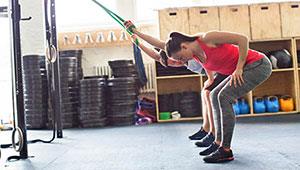

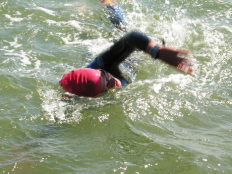
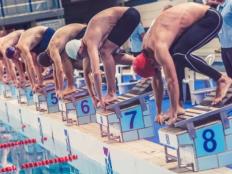
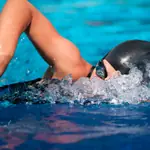

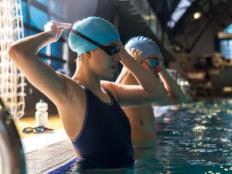
Discuss This Article